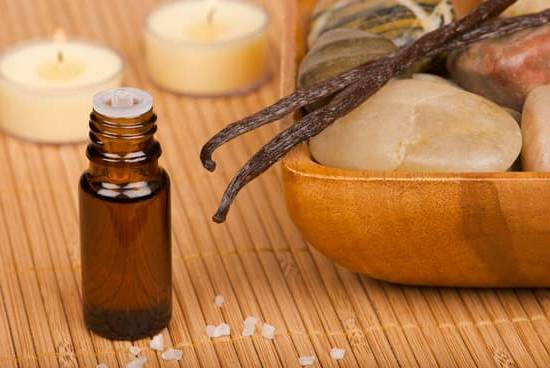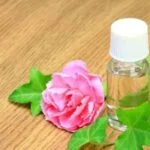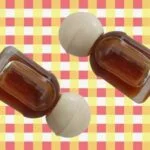Aromatherapy is a holistic healing practice that utilizes the power of scent to promote physical and emotional well-being. With its origins deeply rooted in ancient civilizations, this therapeutic technique has stood the test of time and continues to be widely embraced today. By harnessing the aromatic compounds found in essential oils, aromatherapy offers a natural and effective way to enhance our overall health.
The concept of aromatherapy revolves around the use of plant-derived essential oils, which are highly concentrated liquids extracted from various parts of plants, including flowers, leaves, bark, and roots. These oils contain a complex mixture of volatile compounds that lend them their characteristic scents and therapeutic properties.
For centuries, aromatherapy has held a significant place in different cultures worldwide. Ancient Egyptians utilized aromatic substances for both spiritual rituals and medicinal purposes. Similarly, traditional Chinese medicine incorporated herbal blends to restore balance and stimulate healing. Over time, these practices evolved and merged into what we now recognize as contemporary aromatherapy.
Understanding the historical context of aromatherapy helps us appreciate how it has become an integral part of modern wellness practices. By exploring the science behind essential oils and their impact on our physical and emotional well-being, we can unravel the secrets of this age-old therapy. Whether inhaled or applied topically, essential oils offer unique benefits that have made aromatherapy an enduring practice throughout history.
The Science Behind Aromatherapy
Essential oils are the foundation of aromatherapy, as they are the key components that provide the therapeutic properties and benefits. These oils are highly concentrated substances that are extracted from various parts of plants, such as flowers, leaves, stems, and roots. The extraction methods may involve processes like steam distillation or cold pressing, depending on the specific plant and its chemical composition.
The chemical makeup of essential oils is complex and diverse, with each oil containing a unique combination of compounds. These compounds include terpenes, esters, alcohols, ketones, and phenols, among others. It is this chemical complexity that gives essential oils their distinct aroma and therapeutic effects.
The therapeutic properties of essential oils can vary depending on their chemical composition. For example, lavender oil is known for its calming and relaxing effects due to its high content of linalyl acetate and linalool. On the other hand, tea tree oil has antimicrobial properties due to its high percentage of terpinen-4-ol.
When used in aromatherapy practices, essential oils can have a direct effect on our physical and emotional well-being. Inhaling these oils can stimulate our olfactory system (sense of smell), which is closely linked to the limbic system in our brain – the area responsible for emotions and memory.
By understanding how essential oils work at a molecular level, aromatherapists can choose specific oils to target certain conditions or concerns. For example, if someone is experiencing anxiety or stress-related symptoms, they may benefit from using essential oils with calming properties like chamomile or bergamot.
In summary, understanding the science behind aromatherapy involves recognizing the intricate chemistry of essential oils and how their composition contributes to their therapeutic effects. By harnessing this knowledge, individuals can make informed choices when selecting and using essential oils for their well-being.
The Power of Scent
Aromatherapy has long been recognized for its ability to affect our emotions and moods through the power of scent. The connection between scent and emotion is deeply rooted in our evolutionary history, dating back to ancient civilizations. When we inhale essential oils, the molecules enter our olfactory system and stimulate the limbic system in our brain, which plays a crucial role in regulating emotions, memories, and behaviors.
The limbic system is a complex network of structures, including the amygdala, hippocampus, and hypothalamus. These structures are responsible for processing smell information and triggering emotional responses. When we inhale certain aromatic compounds found in essential oils, they directly activate these areas of the limbic system, eliciting emotional and psychological effects.
One example of how aromatherapy affects our brain is through its calming effects. Essential oils like lavender or chamomile have been shown to promote relaxation by reducing anxiety levels and inducing feelings of tranquility. This may be due to their ability to increase the production of neurotransmitters such as serotonin and GABA, which are known for their calming properties.
Moreover, research suggests that aromatherapy can also have a positive impact on memory. Certain essential oils like rosemary or peppermint have been found to enhance cognitive function and improve memory performance. The aroma of these oils stimulates areas of the brain involved in memory consolidation and retrieval, potentially helping with learning tasks or studying.
Understanding how aromatherapy affects our brain provides valuable insight into its therapeutic benefits. By harnessing the power of scent through essential oils, we can tap into this ancient practice to enhance well-being and support mental health. Whether it’s promoting relaxation or improving cognitive function, exploring aromatherapy offers an exciting avenue for self-care and holistic healing.
Inhalation
Inhalation is the primary method of using aromatherapy to enjoy the therapeutic benefits of essential oils. When we inhale essential oils, they enter our bloodstream and interact with our bodies, allowing for a wide range of effects and benefits. There are different methods of inhalation that can be used to experience these effects.
One common method of inhalation is through the use of diffusers. Diffusers disperse essential oils into the air, allowing us to breathe in their aroma. This method is convenient as it allows for continuous diffusion throughout a space, creating a pleasant and therapeutic environment.
Additionally, direct inhalation involves breathing in the scent of an essential oil directly from a bottle or by placing a few drops on a tissue or cloth. This method is quick and easy to use wherever you are.
Another popular option for inhalation is steam inhalation. This involves adding a few drops of essential oil to hot water, covering your head with a towel, and inhaling the steam deeply. Steam inhalation not only allows for respiratory benefits but also provides soothing effects for conditions such as congestion or cough.
It’s important to note that when practicing inhalation methods, it’s crucial to choose high-quality essential oils and use them responsibly. Always follow safety guidelines and dilute essential oils as needed before using them for inhalation purposes.
Overall, inhalation is an effective way to harness the power of aromatherapy and experience its potential benefits. Whether through diffusers, direct inhalation, or steam inhalations, this method allows us to integrate the therapeutic properties of essential oils into our daily lives.
Some common methods of inhalation in aromatherapy include:
- Diffusers: These devices disperse essential oil particles into the air.
- Direct Inhalation: Breathing in the fragrance directly from an open bottle or by placing a few drops on a tissue or cloth.
- Steam Inhalation: Adding a few drops of essential oil to hot water and inhaling the steam deeply.
- Aromatherapy Jewelry: Wearing necklaces or bracelets infused with essential oils for continuous inhalation throughout the day.
It’s important to choose a method that suits your preferences and needs. Some people may prefer diffusers for a constant diffusion, while others may find direct inhalation more practical when on-the-go. Experimenting with different inhalation methods can help you discover what works best for you.
Remember to start with small amounts of essential oil and gradually increase as needed. It’s also crucial to be aware of any potential allergies or sensitivities you may have before using any new essential oil.
By incorporating the inhalation method into your aromatherapy practice, you can fully enjoy the therapeutic benefits of essential oils and create an atmosphere that promotes mental and physical well-being.
Topical Application
When it comes to aromatherapy, inhalation is often considered the primary method of delivering essential oils. However, there are also alternative ways to enjoy the benefits of aromatherapy through topical application. Topical application involves applying essential oils directly to the skin, allowing them to be absorbed and provide localized effects. This section will explore the various methods of topical application and how they can be used effectively in aromatherapy.
Massage
One popular method of topical application is through massage. The combination of essential oils and massage can be a powerful tool for relaxation and promoting overall well-being. When mixed with a carrier oil such as sweet almond or coconut oil, essential oils can be applied directly to the skin during a massage session.
The gentle pressure from massage helps improve circulation and aids in deeper absorption of the oils into the body. Different essential oils can be chosen based on individual needs, such as lavender for relaxation or peppermint for sore muscles.
Compresses
Another way to apply essential oils topically is through compresses. Compresses involve soaking a cloth or towel in a mixture of water and essential oils and applying it directly to the affected area. For example, a cold compress made with diluted chamomile essential oil can provide relief for headaches, while a warm compress with diluted eucalyptus oil can help ease congestion. Compresses are particularly useful for localized concerns such as muscle pain or skin irritation.
Baths
Enjoying an aromatic bath is not only relaxing but also provides an opportunity for topical application of essential oils. Adding a few drops of diluted essential oils to bathwater allows the scent and therapeutic properties to envelop your entire body.
As you soak in the warm water, your pores open up, enhancing absorption of the oils through your skin. Popular choices for bath-time relaxation include ylang-ylang for stress relief, bergamot for uplifting the mood, or rosemary for a rejuvenating experience.
It’s important to note that when using essential oils topically, they should always be properly diluted. This means mixing them with a carrier oil or another appropriate dilution medium to ensure safe application and avoid skin irritation or sensitization. Each individual has different skin sensitivities, so it’s essential to conduct a patch test before applying essential oils to larger areas of the body.
Additionally, some essential oils may have specific contraindications or precautions, especially when it comes to pregnancy, children, or certain medical conditions. Always consult with a qualified aromatherapist or healthcare professional for personalized advice on which essential oils are safe and suitable for your needs.
Aromatherapy and Relaxation
Aromatherapy has long been recognized for its calming and relaxing effects on the mind and body. Certain essential oils have properties that can help reduce stress, anxiety, and promote a sense of calmness. The use of aromatherapy in relaxation practices has gained popularity due to its natural approach to achieving serenity.
Certain essential oils are known for their ability to promote relaxation and reduce stress. Lavender, for example, is one of the most popular essential oils used for relaxation. It has a soothing scent that helps calm the mind and promotes better sleep quality. Studies have shown that lavender essential oil can lower heart rate and blood pressure, inducing a state of relaxation.
Another essential oil commonly used for relaxation is chamomile. Chamomile has anti-anxiety properties that can help ease nervous tension and promote a sense of calmness. Its sweet, floral aroma is often used in diffusers or diluted in carrier oils for massage.
To harness the calming effects of aromatherapy, it is important to understand how certain essential oils impact the nervous system. When inhaled, aromatic molecules from essential oils stimulate the olfactory system in our brain, which is closely linked to emotions and memory through the limbic system. This interaction with the limbic system triggers emotional responses and can induce feelings of relaxation.
Incorporating aromatherapy into daily self-care routines can be beneficial for overall well-being and stress management. Whether through diffusers, inhalation directly from bottles, or diluted with carrier oils for massage, taking time to relax with the soothing scents of essential oils can provide an instant sense of calmness amidst life’s hectic pace.
| Essential Oil | Calming Properties |
|---|---|
| Lavender | Helps reduce stress and anxiety, promotes better sleep |
| Chamomile | Eases nervous tension, induces relaxation |
| Bergamot | Uplifting scent that helps reduce anxiety and improves mood |
Aromatherapy for Health and Wellness
Aromatherapy has been utilized for centuries as a natural healing practice, offering potential benefits for a wide range of common ailments. By harnessing the power of essential oils, this holistic therapy provides a complementary approach to promote health and wellness. Whether you are experiencing headaches, insomnia, or nausea, aromatherapy may offer relief and support your overall well-being.
Headaches
One of the most common ailments that individuals seek relief from is headaches. Thankfully, aromatherapy offers a variety of essential oils that can help alleviate this discomfort. Peppermint oil, with its cooling and pain-relieving properties, is often used to reduce tension headaches and migraines. Lavender oil, known for its calming properties, can also provide soothing relief when applied topically or inhaled.
Another essential oil commonly used for headaches is eucalyptus oil. With its anti-inflammatory and analgesic effects, eucalyptus oil can help relieve sinus congestion-induced headaches. When combined with peppermint or lavender oil and applied as a compress on the forehead or temples, it can assist in reducing pain and promoting relaxation.
Insomnia
For those struggling with sleeplessness or insomnia, aromatherapy can be a valuable tool to promote restful slumber. Certain essential oils possess sedative properties that can calm the mind and prepare the body for sleep. Lavender oil is particularly renowned for its ability to induce relaxation and promote better sleep quality when diffused in the bedroom or applied topically before bedtime.
Another essential oil commonly used to aid sleep is chamomile oil. Its gentle floral scent has soothing properties that can ease anxiety and stress. Inhalation of chamomile oil before bed can help create a peaceful atmosphere conducive to falling asleep faster.
Nausea
When it comes to alleviating nausea or motion sickness symptoms, certain essential oils have demonstrated anti-nausea properties that can provide relief. Ginger oil, for example, is highly regarded for its ability to soothe an upset stomach and ease nausea. Inhaling the scent of ginger oil or applying a diluted version topically on the abdomen can help alleviate discomfort.
Another essential oil commonly used for nausea is peppermint oil. With its cooling sensation and antispasmodic properties, peppermint oil can relax the muscles of the gastrointestinal tract, alleviating symptoms such as bloating and nausea. Inhalation or applying diluted peppermint oil topically may help provide relief from these digestive issues.
Incorporating aromatherapy into your health and wellness routine may offer a natural approach to treating common ailments. It is important to note that while essential oils can provide great benefits, it is always advisable to seek advice from a qualified healthcare professional before using them as part of your treatment plan.
Safety Precautions
When using aromatherapy, it is essential to follow proper usage and dilution guidelines to ensure safety and maximize the benefits of essential oils. While they are natural substances, they can be potent and may cause adverse reactions if not used correctly. Here are some important safety precautions to keep in mind when incorporating aromatherapy into your daily life:
- Dilution: Essential oils are highly concentrated, and direct application to the skin can cause irritation or sensitization. It is crucial to dilute essential oils before applying them topically by mixing them with a carrier oil such as jojoba oil, coconut oil, or sweet almond oil.
A general guideline for dilution is 2-3 drops of essential oil per teaspoon of carrier oil for adults. However, the concentration should be even lower for children or individuals with sensitive skin. - Patch Testing: Before using an essential oil topically for the first time, it is recommended to perform a patch test to check for any allergic reactions or skin sensitivities. Apply a small amount of diluted essential oil on a small area of skin (such as the inner forearm) and wait for 24 hours to observe any adverse reactions.
- Avoiding Ingestion: In most cases, it is not safe to ingest essential oils without the guidance of a qualified aromatherapist or healthcare professional. Many essential oils are toxic if ingested and can cause harm to internal organs. If you are interested in using essential oils internally, seek advice from an expert who can provide accurate dosage recommendations.
- Pregnancy and Children: Some essential oils may have contraindications during pregnancy or when used on young children due to their potential hormonal effects or higher sensitivity levels. It is best to consult with a healthcare provider before using any essential oils if you are pregnant or breastfeeding.
- Storage: Essential oils should be stored properly to maintain their potency and prevent degradation. They are sensitive to heat, light, and air exposure, so it is important to keep them in dark glass bottles, tightly sealed, and away from direct sunlight or extreme temperatures.
By following these safety precautions, you can confidently incorporate aromatherapy into your daily routine. It is crucial to prioritize safety and use essential oils responsibly to experience their many benefits effectively. Remember, if you have any concerns or questions about using essential oils, it is always best to consult with a qualified aromatherapist or healthcare professional for personalized guidance.
Conclusion
In conclusion, aromatherapy is a practice that has been used for centuries and continues to be valued for its numerous benefits. Throughout this article, we have explored the origins of aromatherapy and its connection to ancient civilizations. We have delved into the science behind aromatherapy, understanding essential oils and their therapeutic properties. Additionally, we have discussed the power of scent and how it affects our brain, particularly through the stimulation of the limbic system.
Furthermore, we have examined the primary method of inhalation in aromatherapy and the various ways to apply essential oils topically. We have also highlighted the calming effects of certain essential oils and their impact on relaxation and stress reduction. Moreover, we have explored how aromatherapy can be utilized for health and wellness purposes, targeting specific ailments such as headaches, insomnia, or nausea.
It is crucial to note that when using essential oils, safety precautions must always be taken into consideration. Diluting essential oils properly and following guidelines is vital in order to avoid potential risks or contraindications, especially for pregnant women, children, or individuals with specific medical conditions.
In harnessing the power of aromatherapy, it is important to remember that everyone’s experience may vary. It is encouraged for readers to explore aromatherapy further and discover its potential benefits in their own lives.
Whether it is through diffusers at home, massage therapy incorporating essential oils at spas, or even creating homemade beauty products with natural scents, there are numerous ways to incorporate aromatherapy into daily routines. By utilizing this ancient practice responsibly and knowledgeably, individuals can tap into the healing powers of scent and enhance their overall well-being.
Frequently Asked Questions
What does aromatherapy do for you?
Aromatherapy is a holistic practice that uses essential oils extracted from plants to promote physical and emotional well-being. The use of aromatherapy allows individuals to experience various benefits, including relaxation, stress relief, improved mood, and enhanced sleep quality.
The aromatic compounds in essential oils can stimulate the olfactory system, which influences our brain and emotions. By providing a pleasing scent, aromatherapy can create a soothing atmosphere and help individuals feel more calm and balanced.
What does aromatherapy do to the brain?
Aromatherapy has been found to have a profound impact on the brain. When we inhale the fragrance of essential oils used in aromatherapy, the olfactory receptors in our nose send signals to the limbic system of the brain. The limbic system is responsible for regulating emotions, memory, and behavior.
As the aroma molecules enter the brain through this pathway, they can trigger various physiological responses and chemical reactions within different parts of the brain. This activation can lead to positive effects such as reducing anxiety, improving focus and concentration, and promoting relaxation.
What is the process of aromatherapy?
The process of aromatherapy involves using essential oils derived from various plants for therapeutic purposes. These concentrated plant extracts are obtained through processes like distillation or cold pressing from flowers, leaves, stems, bark, or other parts of plants. Once extracted, essential oils are typically mixed with carrier oils or other substances before being utilized for aromatherapeutic purposes.
Common methods of using essential oils include inhalation (either directly from an open bottle or by diffusion), topical application (usually diluted with carrier oil), or ingestion (only under specific circumstances under professional guidance). Each method aims to harness the healing properties of specific essential oils and deliver their aromatic molecules into our body systems for desired effects.

Are you looking for a natural way to improve your health and wellbeing?
If so, aromatherapy may be the answer for you.





